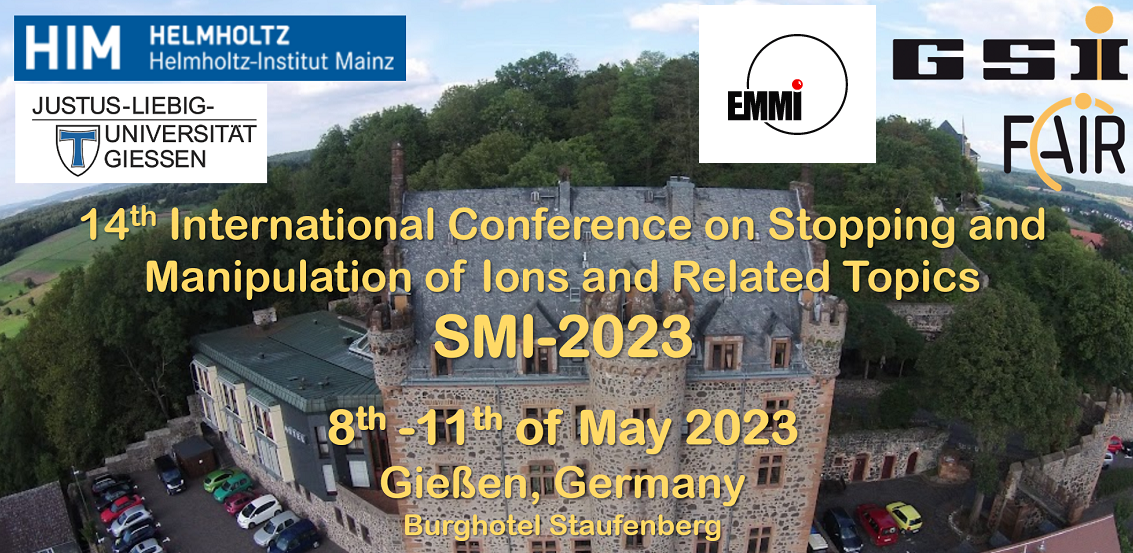Sprecher
Beschreibung
The KEK Isotope Separation System (KISS) [1,2] facility for laser and decay spectroscopy of nuclides produced via multi-nucleon transfer (MNT) reactions is installed at the RIKEN Nishina Center. Recently, a multi-reflection time-of-flight mass spectrograph (MRTOF-MS) [3] has been installed to provide high-precision mass measurements. Following laser ionization ($Z$-selection) the KISS facility accelerates ions to 20~keV and employs a dipole magnet mass analyzer ($A$-selection) to delivery fairly high-purity beams from the vast cocktail of MNT products. To make the 20 keV KISS beam amenable to ion trapping, they are injection into a gas-cell-based cooler-buncher (GCCB) in which they thermalize. Most ions are up-charged to $q$=2$^{+}$ in the stopping process, while nearly all contaminant molecules are broken into light species and not efficiently transported by the RF carpet [4] or RF traps wherein ions are prepared prior to transfer to the MRTOF-MS for mass measurement. By combination of MNT with multi-stage purification, the application of high-precision mass spectroscopy by MRTOF-MS at KISS is expected to allow us to greatly expand the nuclear chart and deepen our understanding of the unexplored regions: around $N$ = 126 and southeast of uranium. \par
In this talk we will present details of the first experiments performed at KISS for the investigation of the actinide region. These experiments were performed with MNT products of the $^{238}$U + $^{198}$Pt system [5]. We have succeeded in the direct mass measurements of nineteen neutron-rich actinide nuclides spanning from protactinium to plutonium, including the first identification of a new uranium isotope ($^{241}$U) since the 1970s.
[1]~Y.~Hirayama \it{et al.}\rm, Nucl. Instrum. Meth. B \bf{353}\rm, 4 (2015). \par
[2]~Y.~Hirayama \it{et al.}\rm, Nucl. Instrum. Meth. B \bf{412}\rm, 11 (2017).\par
[3]~P. Schury \it{et al.}\rm, Nucl. Inst. Meth. B \bf{335}\rm, 39 (2014).\par
[4]~M. Wada \it{et al.}\rm, Nucl. Inst. Meth. B \bf{204}\rm, 570 (2003).\par
[5]~T. Niwase \it{et al.}\rm, Phys. Rev. Lett. in press. \par

